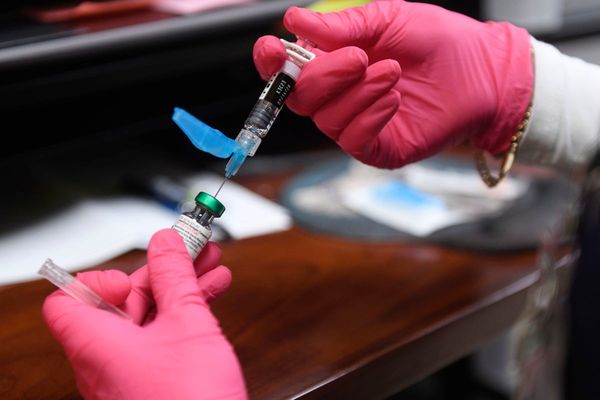
If you wanted to kill as many people as possible, deniably and with no criminal consequences, what would you do? You’d do well to start with a bird flu. Bird flus are responsible for all the known flu pandemics: the great influenza that started more than a century ago, “Asian flu”, “Hong Kong flu” and “Russian flu”, which killed tens of millions between them. They also cause many of the annual outbreaks that slaughter hundreds of thousands of people.
Once you have found a suitable variant, two further components are required to weaponise it. The first is an amplifier. The best amplifier is a giant shed or factory in which thousands of birds are packed. These birds should be genetically homogenous, so that your viral strain can travel freely between them. Intensive poultry farms would serve very well. Before long, a low-pathogenic strain should mutate in these circumstances into a highly pathogenic variety.
To ensure maximum transmission, you should move some of the birds around, faster than the flu’s incubation period. You might carry them across borders. Some would be shifted to free-range or hobby farms, to enhance the possibility of infecting wild birds.
But it’s difficult for a flu virus to travel directly from birds to humans, so another component is required: a mixing vessel. This is a species that can simultaneously harbour the newly pathogenic bird virus and a flu variety already adapted to humans. Then the viruses, conveniently brought together, can exchange genetic material – a process known as “reassortment”.
Pigs are reasonable mixing vessels. They might have played this role in some previous outbreaks and pandemics. But there’s a much better candidate: mink. Mink readily harbour human and avian flu viruses. As predators, they can easily acquire avian flu from the meat they eat. The distribution of sialic acid receptors – a key determinant of infection – in their respiratory tracts is similar to that of humans. Human flu strains can pass between them through aerosol transmission.
Mink also possess, to a remarkable degree, what scientists call “zoonotic potential”: in other words, they can be infected by, and infect, many different species. During the first phases of Covid-19, they proved to be highly effective intermediaries, partly because the virus seemingly evolves faster in mink than in humans. They appear to have generated at least two new variants that spread to humans, one in Spain and one in Italy. Mink are the only known species that both received Covid-19 from humans and passed it back to them.
To enhance their mixing ability, you would cram hundreds or thousands of the tiny cages housing them together, so that this usually solitary animal is forced into contact with others. You would reduce genetic diversity by breeding only those with a particular fur type. In other words, you would do what mink farms do today. Then you would sit back and wait.
The next pandemic might not have been seeded by a murderous psychopath, but, unless we are lucky, the effect could be the same. H5N1 was a fairly harmless bird flu until a highly pathogenic variant was hatched in a Chinese goose farm in 1996. It is deadly to humans. On the rare occasions when people have contracted this variant, it has proved fatal more often than not: of 868 infected up to October last year, 457 have died. Though it has been devastating to both poultry flocks and wild birds, however, its transmissibility from birds to most mammals, and from person to person, is thankfully extremely low.
But mink farming offers the mixing vessel it needs. In 2021, a paper in the journal Emerging Microbes & Infections reported that about a third of the mink the researchers tested harboured both bird flu and human flu antibodies. It warned that this joint infection could generate novel viruses “with high human infectivity”. The public health threat “should not be ignored”, as it had “pandemic potential”. Needless to say, it was ignored.
A few days ago, the journal Eurosurveillance revealed the first known case of large-scale mammal-to-mammal transmission of the H5N1 flu virus. It happened, to no gasps of surprise, on a mink farm; in Galicia, northern Spain. While the mink were fed with poultry products, a practice scientists have long warned against, it seems that the likely cause of infection was contact with a sick wild bird that might have fallen against the bars of a cage, and was dragged through and eaten. Once inside its mixing vessel, the virus mutated to become transmissible to the other mink, then spread rapidly in this farm of more than 50,000 animals from cage to cage.
This epidemic was contained before it left the farm. All the mink were killed, and we might narrowly have missed a pandemic potentially more deadly than Covid-19. But farming mink for their fur, a cruel and pointless practice, continues in Europe, North America and China. There’s a high chance that the next pandemic, whatever it may be, will emerge in one of these places. Because of both the abominable cruelty suffered by the animals and the grave threat it presents to human life, we need a global treaty to ban mink farming.
The H5N1 virus, having acquired its deadly mutations on a poultry farm, is now raging through wild bird populations with horrific consequences. It is killing so many that, in conjunction with other threats, it could drive some species towards extinction. In particular, it is shattering colonies of seabirds. As they reproduce late and slowly, they’re especially vulnerable to extinction. Wild birds could easily introduce the virus to another mink farm.
This threat is bookended by grotesque cruelty: the poultry, mink and pig farms whose horrors we have somehow normalised and accepted. If you treated dogs or cats in the same way as we treat these animals, you would be sent to prison. But do it to farmed species on a large enough scale and you are treated with the special respect accorded to a “captain of industry”. Governments will sweep the dust from your path. Newspapers will write panegyrics of the kind once accorded to emperors.
So who is the homicidal maniac in this story? It’s a scarcely examined abstraction we call “the economy”, a monster to whom anything and everything must be sacrificed without question or resistance: farmed animals, wild ones, even, unless we are fortunate, human beings in their millions. We will prevent the pandemics of the future only when we value life ahead of money.
George Monbiot is a Guardian columnist







